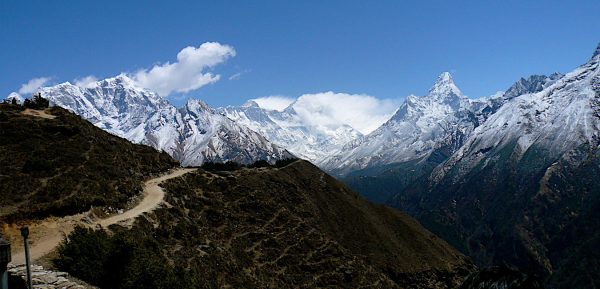Annapurna is a huge massif in the western part of Nepal that spreads across a vast area and engulfing numerous of 6000 to 8000 meters. The region is marked as Annapurna Conservation Area meant for the protection of local flora & fauna. The main peak on this massif is Annapurna I itself, which is the 10th highest peak in the world at an altitude of 8091 m.
This peak is infamous for the casualties that have happened over expeditions in past. The fatality rate during the Annapurna expedition is the highest for any peak and is always feared by climbers. But beyond fear, if you have the will and desire to exceed your own expectations and you have this passion to climb high and further then Mount Annapurna is something you will want to do.
Needless to say that this peak is only meant for a seasoned climber who has several years of experience of mountaineering. The terrain to Annapurna is harsh and rugged and it will definitely test your limits. Annapurna peak climb is for those who have had several peak climbing assignments in their profile.
ANNAPURNA PEAK STATISTICS
- Difficulty: EXTREMELY DIFFICULT
- Elevation in feet: 26545
- Elevation in meters: 8091
- Prominence: 2984 m / 9790 ft
- Coordinates: 28°56 N 83°83 E
- Location: Gandaki Zone, Nepal
- First ascent: In June 1950 by Maurice Herzog and Louis Lachenal
- Climbing window: Mid-May till mid-June and mid-Sept to early-October
- Nearest international airport: Kathmandu, Nepal
- Nearest domestic airport: Pokhra, Nepal
- Driving Routes: Kathmandu-Pokhra (200 km)
Annapurna Peak Information
It is amongst the most difficult mountains in the world to climb. It has a high casualty rate of 32% (fatality-to-summit ratio), which means that for every four climbers one is sure to die. Annapurna peak climb is only for very experienced independent mountaineers. Till 2012 there have 52 casualties while ascending and nine during the descending.
Equipment for Annapurna Peak Climb
- Clothing: Lightweight long underwear top, Expedition weight underwear bottoms, Down suit, Waterproof breathable jacket & pants, Wind shirts/light shell jacket, Jacket synthetic or fleece of down feather, Synthetic insulated pants etc.
- Gear for Hand & Head: Liner glove, Windcheater fleece gloves, Mittens with liners, Bandanna, Sun hat, Insulated climbing gloves, woolen caps, Face mask etc.
- Other Accessories: Glacier glasses, Sunglasses/Goggles, anti-glare glasses, night vision glasses, Headlamp with spare bulb and extra batteries.
- Climbing Gears: Ice ax, Crampons, Webbing, Carabineers, Rappel device, Ascenders, Jumar, Piton, Shovel etc.
- Protection and First-Aid: Sunscreen, Toiletry kit, Water purification tablets, Zip-lock bags, Ear plugs, First-aid and all essential medicines.
- Gears for Travel: Expedition duffel bag, Nylon stuff sacks, Rucksack, Day pack for hiking purpose etc.
- Camping Equipment: Tents, sleeping bags with liner, Trekking poles, Pee bottle, Pee Funnel for Women, Water bottles, Sleeping mat, etc.
- Footwear: Cold weather boots, Climbing boots, Casual shoes, Gaiters, Koflach, Crampon, Lightweight/ Midweight/ Liner socks.

Tour Reviews
There are no reviews yet.
Leave a Review